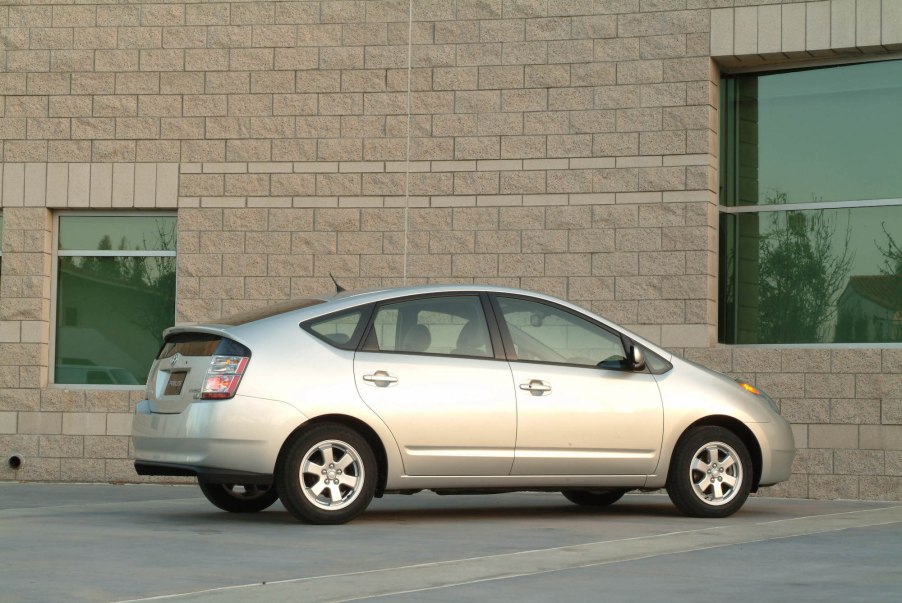
Toyota Prius: A History of the Ugly Duckling of Hybrid Cars
Some people choose to drive a Toyota Prius. And some people make fun of the Prius and those who drive one. In case you’re not familiar with the fairy tale The Ugly Duckling, it tells the story of a duckling that starts out “ugly” because it looks different from the other ducklings. When the duckling grows up, it turns out to be a beautiful swan.
Whether you think swans are prettier than ducks or not, the argument can be made: The Toyota Prius might not look as nice as other hybrids, but it’s a good car once you get to know it. And it’s had serious staying power.
The Toyota Prius was the first mass-produced hybrid car

The Toyota Prius has an interesting history. In 1997, the first commercially available Prius rolled off the line and headed to dealer showrooms in Japan. It would be another few years before the Prius made its way to the global market. The first U.S. Prius became available in August 2000. By then, it was facing stiff competition from other hybrids. In 2003, Toyota released the first of the second-generation Prius, maintaining the “triangle silhouette” of the initial design. Later releases would continue to use that design.
The first Prius uses essentially the same technology as present-day Prius hybrids: a combination of an electric motor and a standard, gasoline-powered engine. The motor starts the engine and performs many basic functions, switching to gas power for speed and as needed, Car and Driver reports.
These design features, together with a body emphasizing fuel efficiency, continue to make the Prius efficient and subjectively ugly. Sure, the early Prius looks weird. More recent iterations look more like a standard four-door but still different. Many things about this car have changed, but the cheese wedge shape has not.
The Prius: Debatably ugly, admittedly slow
More problematic than looks: The Toyota Prius also tends to be slow. That’s because its designers continue to place fuel efficiency ahead of acceleration. By the numbers, the Prius takes almost twice as long to get from 0 to 60 mph as a standard sedan: about 10 seconds versus about 5 to 6 seconds. A few seconds might not seem like much, but you’ll probably notice it when driving a Prius — or driving behind one.
The hybrid wars: Novelty, competition, and sales
Stiff competition in the hybrid market, along with the Prius’ less-than-stellar reputation, has shown in U.S. sales numbers. They’ve steadily declined over the years, GoodCarBadCar shows. Let’s not forget competition from plug-in hybrids and electric cars, too.
At the peak of its success, the Prius sold over 200,000 new cars each year. Recent years show sales well under 100,000. Driven by these losses, Toyota continues to attempt to improve and diversify its Prius lineup to appeal to U.S. consumers.
Toyota Prius upgrades over the years
The Toyota Prius received its first upgrades before even entering the U.S. market. A larger body and improved horsepower were designed to make the car more attractive. More recent design changes have continued this trend. And now the Prius offers various models and options, including the most fuel-efficient and affordable standard model, the Eco, and all-wheel drive options, Toyota shows.
In addition to these options, there’s also the most expensive model in the lineup: the Prius Prime, a PHEV that’s even more fuel-efficient than the hybrid models while lacking even more acceleration and handling. That’s because it uses a heavy lithium-ion battery to power the motor. But this battery can go farther on a single charge, relying less on the gas engine.
And that is what you call knowing your target market and aiming directly for it while ignoring everyone else on the metaphorical road. If nothing else, this could sum up all there is to love and hate most about the Toyota Prius: The most expensive model you can buy is more fuel-efficient than, slower than, and as “ugly” as the cheapest option. It also boasts some infotainment bells and whistles, but we know what the Prius is really about: fuel efficiency, fuel efficiency, fuel efficiency.


